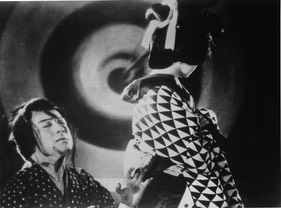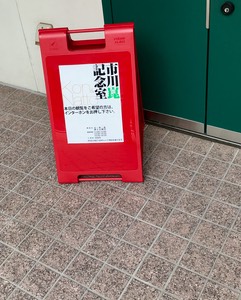News and Opinion
Conversations in Silence 6: Kinugasa Teinosuke’s Crossroads (Jujiro)

We had a good turnout in June for the fifth edition of Conversations in Silence at Haremame, where we showed the Cabinet of Dr. Caligari. Kataoka Ichiro was decked out in his frock coat (which he only wears for Caligari), and Kikuchi Naruyoshi set the mood using mostly German music from Stockhausen to body music. The talk afterwards was great, especially as Kikuchi-san talked at length about the difficulties of adding music to Japanese vs. European films.
The next film in the series might be a test of Kikuchi-san’s skills, since we will be showing Kinugasa Teinosuke’s experimental jidaigeki Crossroads (Jujiro) from 1928. We showed Kinugasa’s Page of Madness (about which I have written a book) for the first edition of the series, and Crossroads was the director’s attempt at experimentation subsequent to that, after having returned to mainstream filmmaking for a few years. It is quite unusual compared to the jidaigeki of the time, both for its noirish lighting and tale of love and blindness, but also for the fact it was one of the first period films not to have a sword fight, which was a defining feature of jidaigeki. A master director of jidaigeki, Kinugasa was bending genre rules and aiming for something else. I wonder how Kikuchi-san will interpret this film that is neither European nor clearly fitting the rules of a Japanese jidaigeki.
Ichikawa Kon Memorial Room

Having published on Ichikawa Kon before (see my article here), I’ve been meaning to do it for some time, but I finally made the trek to visit the Ichikawa Kon Memorial Room (市川崑記念室). It is a small museum in Shibuya dedicated to the illustrious filmmaker Ichikawa Kon and his scriptwriter wife, Wada Natto.
The museum itself is in Nanpeidaicho about a fifteen minute walk from Shibuya Station. It is located where Ichikawa and Wada had their house. The house was torn down and an apartment building built on the site in 2015. The first floor is where the Memorial Room is located.
It is not that large. The walls in the entrance hall are full of introductions to all of Ichikawa’s feature films. The main room is devoted to exhibits (see the photo below). On the walls are exhibits featuring some of his major films: Harp of Burma, Enjo, Her Brother, Ten Dark Women, Tokyo Olympiad, and The Makioka Sisters. They feature copies of the scripts, storyboards, press materials, and other items. Ichikawa was a very diligent and meticulous man, and he made colored charts for the productions of his films that are also on display. He was one of the first Japanese feature film directors to emerge from the world of animation, so his storyboards are quite delightful. Some of his last efforts at animation—cut out animation—are also on view, as are some materials from his TV work and a number of his awards. There are also his personal 35mm camera and Steenbeck editing table.

